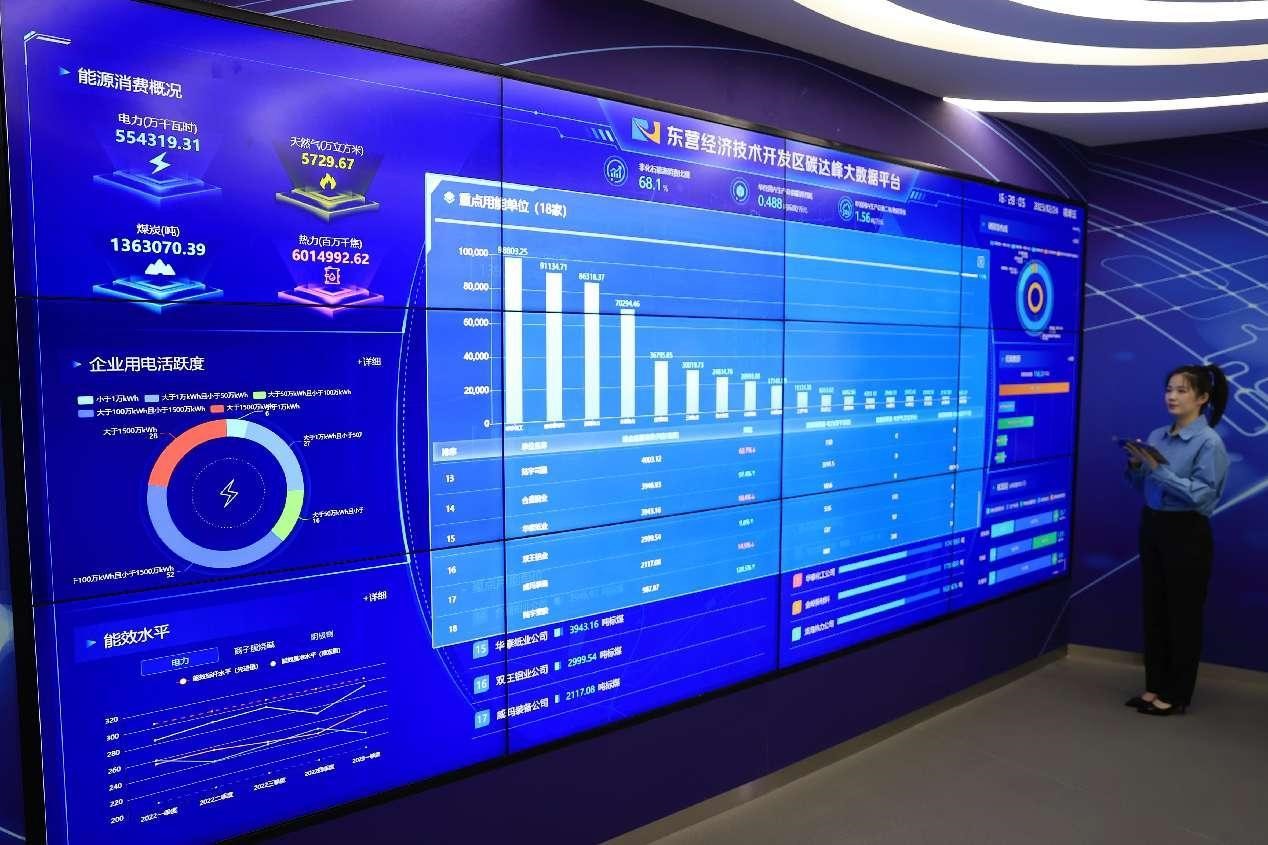At the construction site of a futuristic village demonstration project in Huangpu district, Guangzhou, south China's Guangdong province, prefabricated components of house structures were hoisted into place, and soon, more than 200 green, low-carbon and livable residence buildings would rise from the ground.
In a prototype room, Fan Zesen, deputy general manager of China Construction Science and Technology Group Co., Ltd., the contractor of the project, shared with People's Daily the secret to the project's outstanding energy-saving capability.

Prefabricated components are manufactured in a workshop of a prefabricated construction company in Huaibei, east China's Anhui province. (People's Daily Online/Wan Shanzhao)
On one hand, the design of these residence buildings fully utilizes natural lighting and energy-efficient structures. The north- and south-facing windows adopt energy-saving glazing with high light transmittance and low heat transfer coefficients. Reasonably designed overhanging eaves and shading curtains can effectively reduce solar radiation. The combination of a sloped roof and a flat roof, coupled with a thickened indoor insulation layer, can effectively reduce indoor heat loss.
On the other hand, a PEDF (photovoltaic, energy storage, direct current, flexibility) solution is adopted, where solar energy generated on the rooftops is stored and can be flexibly utilized. "With the PEDF system, a 300-square-meter five-bedroom house can generate an average of 870 kilowatt-hours of electricity per month, achieving self-sufficiency when there is sufficient sunlight," said Fan.
According to him, the project employs intelligent construction technologies, with 80 percent of the work completed in smart factories, thereby improving construction efficiency while reducing the environmental impact of on-site construction activities.
The construction sector is one of the major energy consumers and carbon emitters. In recent years, China has been continuously improving the energy efficiency and carbon reduction levels of new buildings, promoting energy efficiency and carbon reduction in the construction sector from the source.
As for existing buildings, efforts have been made to promote energy-saving and carbon reduction through renovation and upgrades. In recent years, China has renovated and upgraded a cumulative area of over 2.4 billion square meters.
Currently, the main sources of heating for buildings in China include combined heat and power plants, and regional coal-fired or gas-fired boiler rooms, which generate a significant amount of carbon dioxide emissions. To address this, China plans to further increase the utilization of photovoltaic systems, residual heat, and geothermal energy, to optimize the energy mix for buildings.

A staff member of an industrial internet innovation center in Dongying, east China's Shandong province, checks real-time energy consumption through a big data platform. (People's Daily Online/Zhou Guangxue)
"I have 59 photovoltaic panels on the roof, which not only provide insulation and warmth but also earn me extra income through power generation," said Xu, a resident in Kefang village, Tongchuan, northwest China's Shaanxi province.
In 2023, LONGi Green Energy Technology Co., Ltd., a leading enterprise in the solar photovoltaic industry in China, started building Kefang village into a "zero-carbon" village powered by solar energy.
The project aims to build a distributed photovoltaic power system with a capacity of 6 megawatts, which generates around 7.91 million kilowatt-hours of electricity annually. The green energy produced will offset the village's daily carbon emissions.
Efforts to promote low-carbon energy transformation for rural construction and facilities are actively underway across various regions in China.
In Dezhou, east China's Shandong province, there is a 505-mu (around 33.67 hectares) glass greenhouse that utilizes a medium-deep geothermal heating system, ensuring a warm and pleasant environment throughout the year. In Harbin, northeast China's Heilongjiang province, a rural biomass centralized heating project efficiently utilizes straw to provide heating for residents.
"According to statistics, China has the potential to install a total of over 1.9 billion kilowatts of photovoltaic capacity on the rooftops of rural buildings and facilities. In the future, over 80 percent of rural areas can essentially rely solely on building-integrated photovoltaic power generation and nearby hydropower to meet their energy needs for production and daily life," said Jiang Yi, director of the Building Energy Conservation Research Center at Tsinghua University.

Photo shows photovoltaic panels installed on rooftops of warehouses in Ganzhou International Inland Port, east China's Jiangxi province. (People's Daily Online/Zhu Haipeng)
Jiang believes that accelerating the transformation of energy consumption in rural areas, which helps shift them from fossil fuel consumers to significant producers of low-carbon and zero-carbon energy, can effectively address energy issues and environmental pollution in rural areas.
In Hangzhou, east China's Zhejiang province, a five-star hotel has installed two rows of high-efficiency air source heat pumps on its rooftop terrace. These heat pumps are connected to a smart energy and carbon management platform, which allows for remote setting of operating parameters and intelligent start-stop based on energy demand.
"The system will automatically adjust the load based on changes in outdoor temperature, energy usage habits, and other factors, ensuring a relatively constant supply of water at desired temperature and heating, which meets the heating and hot water needs of rooms, swimming pools, and other facilities, while preventing energy waste," said an executive with ENN Group, which installed the air source heat pumps for the hotel.
After the hotel's energy-efficiency retrofit, the overall efficiency of its heating and hot water systems has improved by approximately 30 percent, reducing related operation and maintenance costs by around 10 percent, the executive said.
Buildings consume much energy and emits much carbon dioxide in their operational phase. China has introduced a series of measures to strengthen energy management and carbon reduction in building operations. These measures include accelerating the elimination of inefficient and outdated energy-consuming equipment, establishing a regulatory system for energy efficiency for public buildings, and implementing temperature control mechanisms for public buildings.